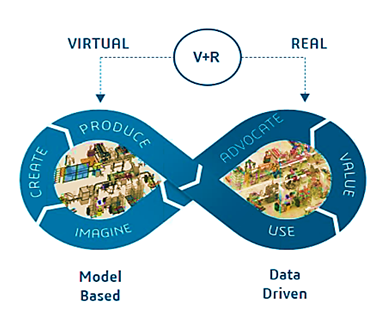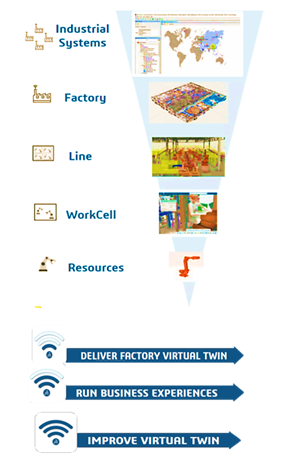Competitive demand is growing rapidly for new products, faster development and delivery cycle. High competition among customers to launch new products on the market results in higher lead times (The time from product idea to delivery is called lead time). Agility in process design has also increased in the current trends.
Manufacturers lack the time and resources to experiment and find optimal facility layouts. Manufacturing processes are often restricted to using older, established methods with a limited ability to improve them. The Digital Twin Experience allows such experimentation to take place digitally and determine the best configuration before spending precious time and resources.
Challenges Faced By Manufacturers

The Digital Twin Experience enables a closed loop connection between the digital and real world, allowing simulated plans to be immediately and confidently executed. At the same time, real-time updates are captured from manufacturing to inform the Digital Twin Experience, allowing it to continuously refine and optimize processes for a long- term strategy.
Manufacturers struggle with suppressed margins due to competitive pressures while working with short production runs, making downtime costly when configuring an assembly line. The Digital Twin Experience helps manufacturers be more flexible by simulating changeovers ahead of time and identifying the quickest and most cost-effective way to do so, minimizing downtime.

That journey isn’t simply about software; it’s about a new way of thinking about process improvement in manufacturing. Large corporations have used expensive research teams to think about process improvements, expansion and new technologies.
Smaller manufacturers, without the luxury of dedicated R&D lines, were usually restricted to the former, and were often forced to make hard decisions about the time and money needed to generate an improvement.
Digital Twin allows small and medium-sized manufacturers to run “What If” experiments in the digital factory, trying different techniques and technologies to see what works and what doesn’t. Production managers and engineers can develop a high degree of confidence in a new configuration before the expensive (and historically risky) step of interrupting production to make a change.
What can be digitized
A Digital Twin can simulate the changeover process and identify wasted time and motion and, importantly, can graphically show in what order a series of changeovers should be planned. This can have a knock-on effect where faster, more efficient changeovers allow lower part or assembly inventory levels and permit rush jobs to be integrated into a production run with minimal disruption or overtime. This permits longer range production planning despite the occasional need to interrupt lines for small orders.

Digital Twin as a Service
